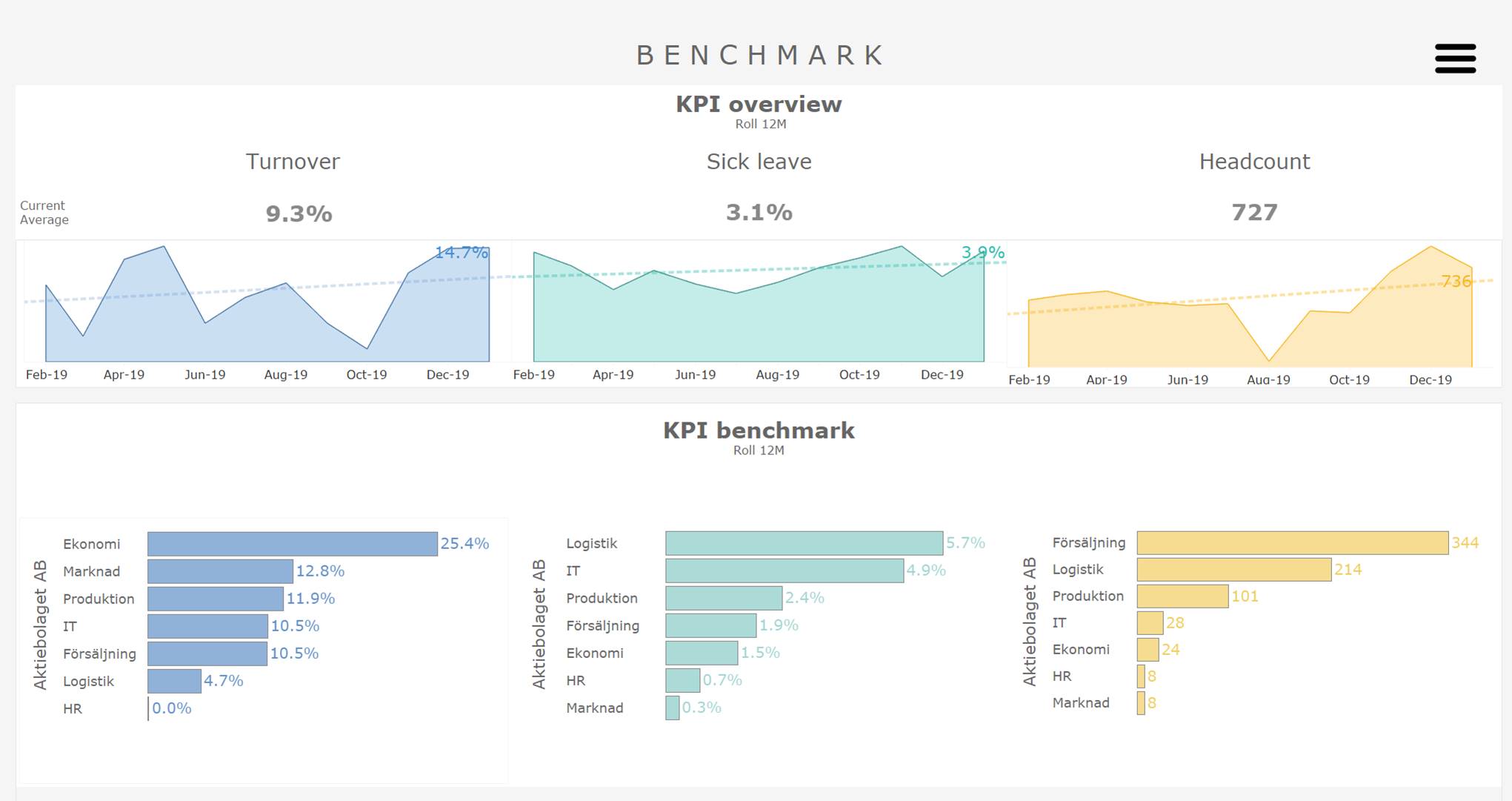Heartpace HR
Continuous follow up of your HR-key metrics
Supported by an efficient plattform you can easily monitor your HR-key metrics.
Upload your data with one click and get instant access to an interactive dashboard with insights such as staff turnover, sick leave and internal mobility.






How does it work?
When you have signed up for using our portal – PeopleInsights – for monitoring your HR key metrics, we create a user account for your organization. You log in and with a few click PeopleInsights will get you started.
Workshop
Our new collaboration always starts with a workshop. During the workshop we discuss your need, data capture, data quality etc. After the workshop you make decisions about what and how you want to go ahead and implement the solution.

Standard metrics
- Headcount/FTE
- Sick leave
- Staff turnover
- Internal mobility
- Demography
All key metrics can be broken down and compared, depending on what data is uploaded and on what is relevant to your organization. To name a few examples you will easily find:
- How staff turnover looks among managers in the northern region
- How sickness absence appears among men in the logistics department
- How internal mobility differs between high and low performers
- During the workshop we process your additional needs regarding key metrics and how you want to be able to crunch the data. PeopleInsights has no limitations – Everything is possible.
Utforska era HR-KPI:er
Ongoing follow up of HR-metrics
A simple and flexible tool for monitoring HR key metrics. Get on top on your business most important KPIs!
Book a demoData collection
You download our data collection template, fill in the requested data and then upload the templates again. PeopleInsights helps you to wash and structure your data so that it can be analyzed. Super easy.


Analytics
Once you have uploaded your data, your interactive report will be generated. Here you can get insights on sick leave, staff turnover and your internal mobility. Which divisions are best at internal mobility? Which age category is most likely to resign? How many of those who resign is doing so within a two-year period from the date of employment? Etc.
